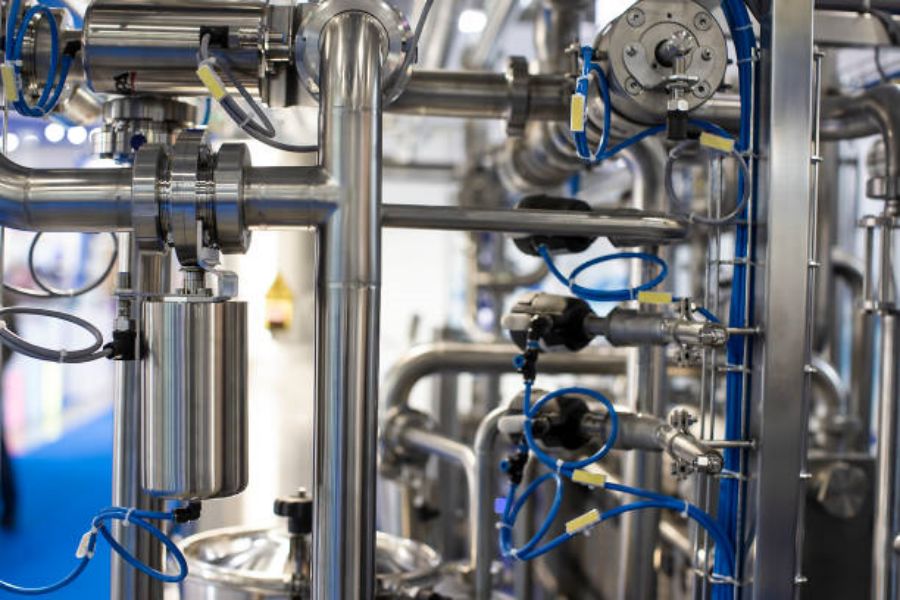The Basics of a Glycol Refrigeration System
A glycol refrigeration system is a type of cooling system that uses a mixture of water and glycol as the cooling medium. This system is commonly used in commercial and industrial applications, such as food processing plants, breweries, and cold storage facilities. It offers efficient and reliable cooling for various processes and products. In this article, we will explore how a glycol refrigeration system works and its key components.
The Role of Glycol in the System
Glycol, specifically propylene or ethylene glycol, is added to water in a glycol refrigeration system to lower its freezing point and increase its boiling point. This allows the system to operate at lower temperatures without the risk of freezing or boiling. The glycol acts as an antifreeze and heat transfer fluid, ensuring the smooth operation of the system.
Evaporator: Where Cooling Begins
The evaporator is a crucial component of a glycol refrigeration system. It is responsible for absorbing heat from the desired area and transferring it to the glycol. In this process, the liquid refrigerant, which is typically ammonia or a halocarbon, evaporates and changes into a gas. The evaporator is designed with a large surface area to maximize heat transfer and facilitate efficient cooling.
Compressor: Boosting the Refrigerant's Pressure
The compressor plays a vital role in a glycol refrigeration system by increasing the pressure of the refrigerant gas. This high-pressure gas is then sent to the condenser for further processing. The compressor is often powered by an electric motor and is designed to handle the specific requirements of the refrigeration system.
Condenser: Removing Heat from the System
The condenser is responsible for removing heat from the glycol refrigeration system. It receives the high-pressure refrigerant gas from the compressor and cools it down, causing it to condense into a liquid. The heat removed from the refrigerant is usually released to the surrounding environment through air or water. The cooled liquid refrigerant is then sent back to the evaporator to repeat the cooling cycle.
Expansion Valve: Controlling the Flow
The expansion valve regulates the flow of refrigerant from the condenser to the evaporator. It creates a pressure drop, which causes the refrigerant to expand and change from a high-pressure liquid to a low-pressure, low-temperature mixture. This expansion allows the refrigerant to absorb heat from the desired area and ensures efficient cooling.
Pumps: Circulating the Glycol
In a glycol refrigeration system, pumps are used to circulate the glycol throughout the system. These pumps provide the necessary pressure to ensure that the glycol flows smoothly through the evaporator, condenser, and other components. They play a crucial role in maintaining the overall efficiency and performance of the system.
Control System: Monitoring and Adjusting
A control system is a crucial part of any glycol refrigeration system. It monitors various parameters, such as temperature, pressure, and flow rate, to ensure optimal operation. It also allows operators to make adjustments and fine-tune the system as needed. The control system ensures that the glycol refrigeration system operates within the desired parameters and provides reliable cooling.
Applications of Glycol Refrigeration Systems
Glycol refrigeration systems are widely used in various industries due to their versatility and efficiency. They are commonly found in food processing plants, breweries, wineries, cold storage facilities, and pharmaceutical manufacturing plants. These systems are capable of providing precise and consistent cooling, ensuring the quality and safety of products.
Advantages of Glycol Refrigeration Systems
There are several advantages to using glycol refrigeration systems. Firstly, the use of glycol as a heat transfer fluid allows for a wider range of operating temperatures. This makes it suitable for both low-temperature and high-temperature applications. Additionally, glycol has good heat transfer properties, which enhance the efficiency of the system. Lastly, glycol refrigeration systems are known for their reliability and durability, making them a preferred choice for many industries.
Maintenance and Troubleshooting
Proper maintenance and regular inspections are essential for the smooth operation of a glycol refrigeration system. This includes checking for leaks, monitoring glycol levels, and ensuring the proper functioning of all components. In case of any issues or malfunctions, troubleshooting should be carried out promptly to minimize downtime and prevent further damage to the system.
